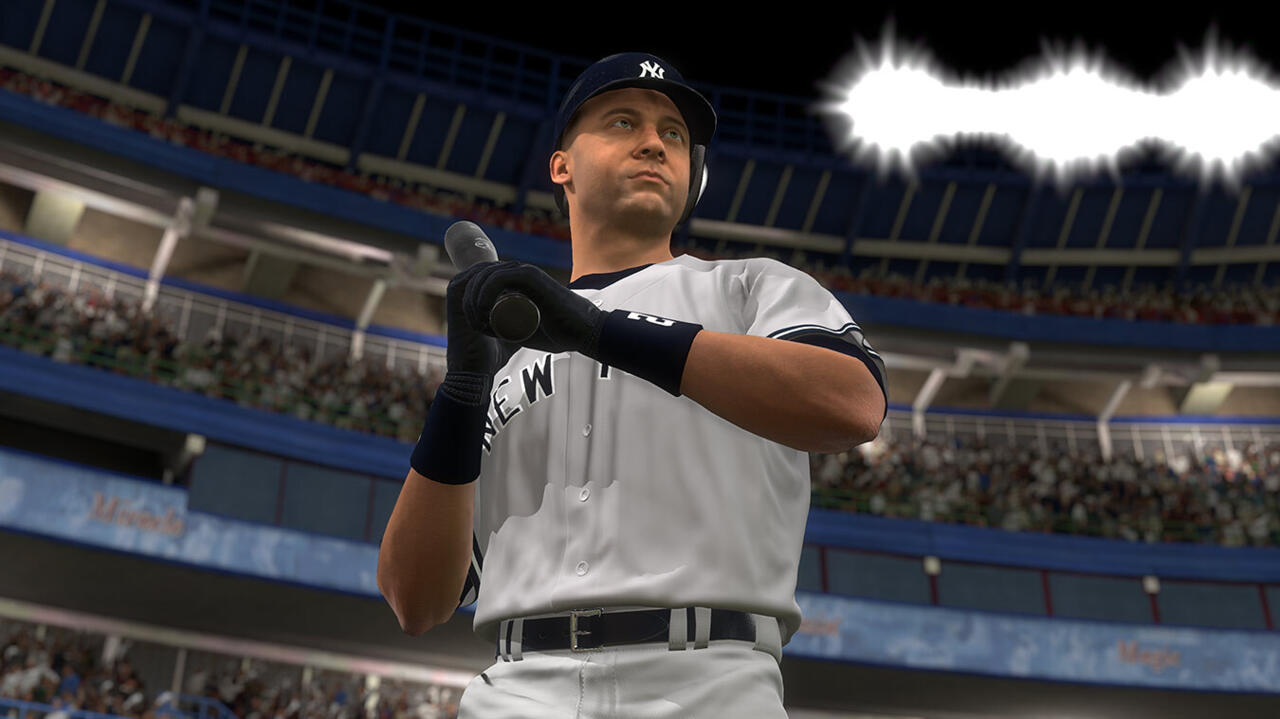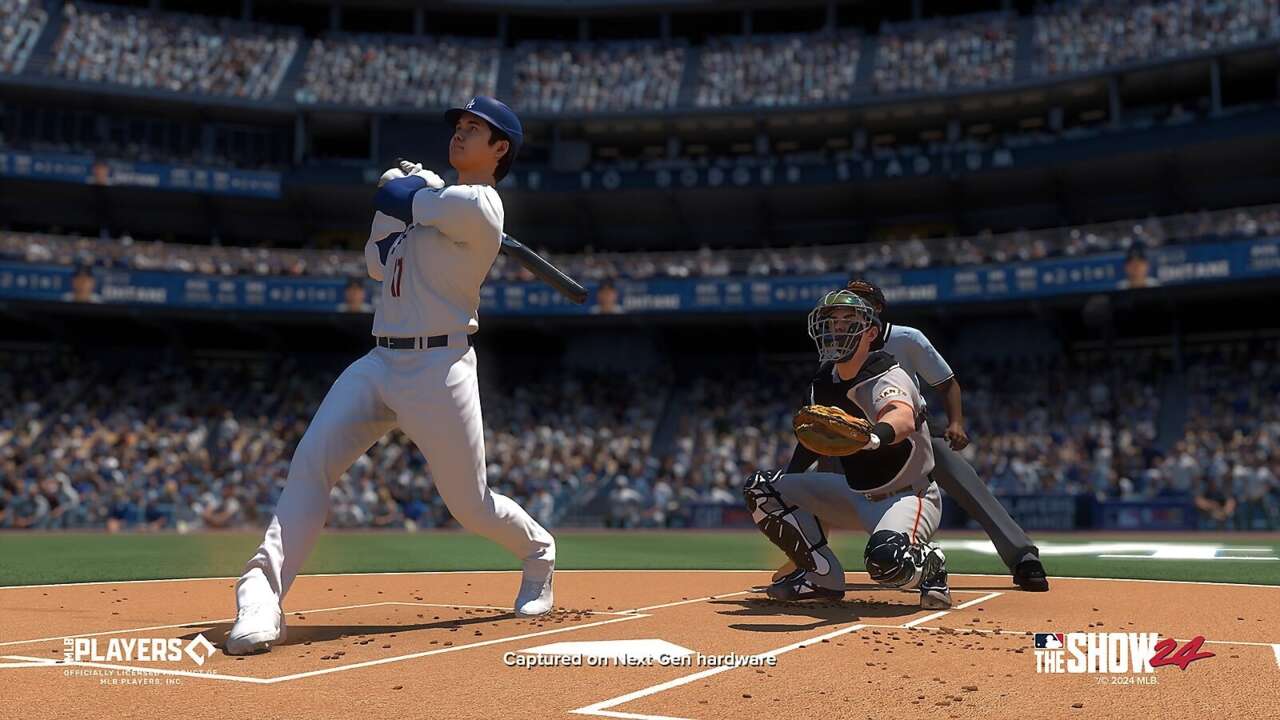A lot of people will tell you that Hank Aaron is the greatest to ever play the game of baseball. Bob Kendrick, President of the Negro Leagues Baseball Museum, is one of those people, and it’s easy to see why. You only have to look at Hammerin’ Hank’s stats–755 home runs and 3,771 hits in Major League Baseball–his outstanding consistency across 23 big league seasons, or the fact that he achieved all of this after such humble beginnings. Growing up, Aaron had few opportunities to play organized baseball. In fact, he had few opportunities to even use the right equipment. Instead, a young Henry Aaron would take his mom’s broomstick and use it as a makeshift bat to hit bottlecaps–it’s no wonder he ended up being so good.
I knew of Hank Aaron’s incredible career, but supplemental details like this are part of what makes Storylines such a captivating and enlightening experience. If last year’s game was all about introducing this brilliant and groundbreaking new mode, then MLB The Show 24 is more about fine-tuning the existing framework. This isn’t an uncommon approach for annual sports games, and while Sony San Diego’s latest baseball sim might not seem as fresh or exciting as last year’s offering, it still plays an excellent game of baseball while possessing a tangible reverence for the sport’s rich history and inherent romanticism. Players are more than just stats and numbers, after all.
This is where Storylines comes in, and it’s once again the highlight of the whole package. Like any good TV series, MLB The Show 24 returns with a second season of The Negro Leagues, exploring an era of baseball that has often been overlooked and forgotten. At launch, there are four stories to play through, shining a spotlight on the aforementioned Henry “Hank” Aaron, as well as Josh Gibson, Walter “Buck” Leonard, and Toni Stone, with more set to arrive in forthcoming updates.
Bob Kendrick’s charismatic and insightful narration brings these tales to life, aided by slickly produced videos that weave in historical photographs, original artwork, and archival footage to paint a portrait of these players and their profound impact on baseball and American culture. In between these video packages, you’ll play through pivotal moments from each player’s career, from Aaron’s first hit as a member of the Milwaukee Braves to Josh Gibson’s decimation of MLB pitching in exhibition games–where he batted a ridiculous .426. Perhaps the most interesting collection of episodes focuses on the career of Toni Stone, a true trailblazer who became the first woman to play for a professional baseball team when she took Hank Aaron’s roster spot after he departed the Negro Leagues for the MLB.
Alongside these eye-opening tales, MLB The Show 24 also expands on the Storylines concept by adding a series on legendary New York Yankees shortstop Derek Jeter. By using a New York subway motif as the backdrop for Jeter’s story, the former captain recounts important moments from the first few years of his storied career as you travel along the tracks from 1996 to 2000. Starting with his first steps as an unheralded rookie to achieving legendary status as the Yankees won three consecutive World Series titles, Jeter gives you an insight into his and the team’s mindset during this monumental run. There are also three side stories that center on the other members of the Yankees’ Core Four: Mariano Rivera, Jorge Posada, and Andy Pettitte. These stories are brief, consisting of a single video package, but completing each additional mission unlocks their player cards for use in Diamond Dynasty.
As a Yankees fan, I enjoyed Jeter’s retelling of the era’s events, along with being able to recreate moments like his iconic jump-throw and a number of his clutch hits. Admittedly, however, it’s not the most interesting collection of stories. This is a team and player that won four championships in five years with little to no adversity, while Jeter himself was relatively drama-free off the field. It doesn’t make for the most compelling narrative, but the inclusion of Jeter’s Storylines does at least set a precedent for the series where we’ll hopefully see more engrossing tales in the future, whether the focal point is on a single Hall of Fame player or an entire team.

Gallery
Road to the Show, meanwhile, lets you create and play as a woman for the first time. There are specific video packages that differ from those in the male career, with MLB Network analysts embracing the historical significance of a woman being drafted by an MLB team. A separate narrative based around you getting drafted alongside a childhood friend also differentiates the female career from the male side–which lacks any kind of story–while considerations like a private dressing room add an element of authenticity. The majority of cutscenes play out via text message, however, replacing the series’ previous narration with a hackneyed alternative.
The only other new addition to Road to the Show is the return of the Draft Combine, which gives you three games to improve your draft ranking by playing well against other prospects. While it’s good to see the combine back, it’s a fairly superfluous addition for those who simply want to choose which team to play for rather than leaving it up to fate. It also doesn’t take into account starting pitchers, dropping your draft stock because you’re only able to play in one of the three available games. The inclusion of women is a positive one, but Road to the Show is still in desperate need of an overhaul to its tired loadout system and bland presentation.
Franchise remains mostly the same, aside from one new addition with the potential to completely alter how you engage with the mode. Custom Game Entry Conditions is a setting that lets you simulate games until certain conditions are met, at which point you’re able to take control. You can customize these conditions based on how critical the situation is by tinkering with a situation-importance slider that ranges from low to very high.
You’re able to pick the earliest inning you’re willing to enter games, and can also ensure that you’ll always jump into player-highlight moments, such as finishing off a potential no-hitter or extending a batter’s hitting streak. With this setting, you might decide you only want to enter games during high-leverage situations in the ninth inning or play from the seventh inning onwards in tight games. This alleviates the grind of a full 162-game season while keeping you invested and making sure you have an impact on games that might mean the difference between making the playoffs or missing out on October baseball. The one side-effect of this addition is that Road to October and its truncated seasons now feel obsolete, but improving Franchise makes this a worthy trade-off.
Diamond Dynasty, the card-collecting and squad-building mode, is also not too dissimilar from last year’s game. The implementation of Sets and Seasons has been tweaked, with longer seasons giving you more playing time with season-limited cards. The amount of top-rated cards attainable at the beginning of a season has also been reduced to give you something to build towards.
Cards will now gradually escalate in power over the course of a single season so you won’t be rocking a 99-rated team after a single week. These are positive changes in what remains the most approachable of the many card-collecting modes in sports games, such is the ease with which you’re able to acquire great players without spending a dime. The plethora of single and multiplayer modes is also a feather in its cap.
MLB The Show 24’s on-field action remains stellar. For the first time, new rules like the pitch clock, slightly larger bases, and limited pick-off attempts have been implemented. Impact Plays, a new addition that emphasizes great defense, are also new, reinforcing the impact of spectacular diving catches and difficult throws. Impact Plays are possible anytime you’re player-locked, such as in Road to the Show. If there’s a possibility for a highlight-reel play, the game will slow down and task you with completing a quick-time event. How you perform here determines how successful the play will be. It feels great each time you’re able to rob a batter of a base hit by plucking the ball out of the air moments before it touches the ground or firing a laser beam to first base to beat a runner. I only wish Impact Plays were more frequent and were included as an option when controlling a full team.
The continued absence of an online Franchise mode and the stale nature of Road to the Show are disappointing aspects of this release, but MLB The Show 24 still maintains the series’ commendable output with fantastic gameplay and another collection of fascinating stories exploring The Negro Leagues and its players. A journey through the exalted career of Derek Jeter might not be quite as gripping, but it builds on Storyline’s established framework and lays down an exciting blueprint for the mode’s future. The addition of women in Road to the Show is another positive step, further reinforcing the overarching theme that baseball is for everyone, while the ability to customize how you play Franchise mode makes it a much more palatable proposition for those embarking on a 162-game season. MLB The Show 24 might not swing for the fences, but it’s still a great way to spend the looming summer months.
